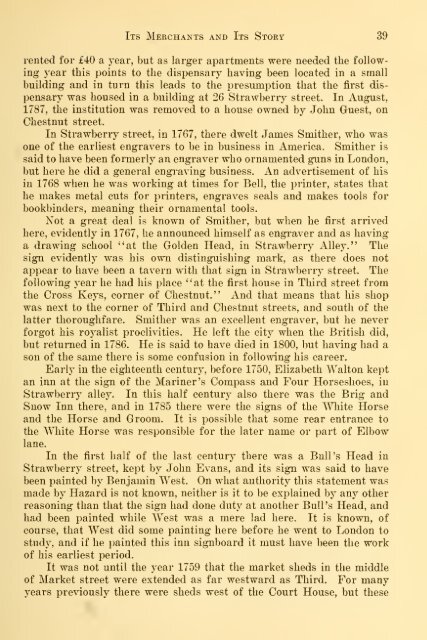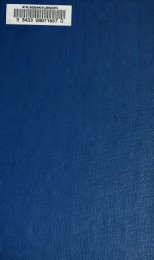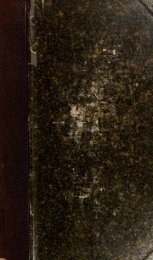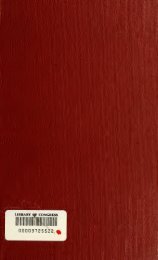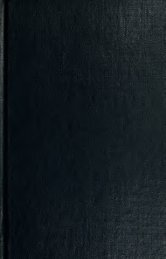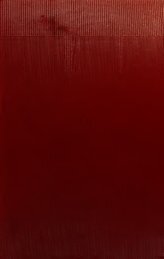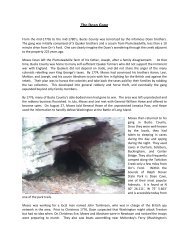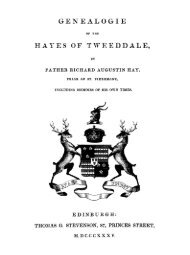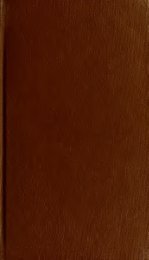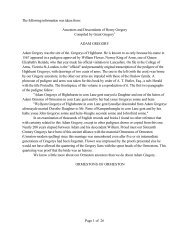Market street, Philadelphia; the most historic ... - Hay genealogy
Market street, Philadelphia; the most historic ... - Hay genealogy
Market street, Philadelphia; the most historic ... - Hay genealogy
Create successful ePaper yourself
Turn your PDF publications into a flip-book with our unique Google optimized e-Paper software.
Its Merchants and Its Story 39<br />
rented for £40 a year, but as larger apartments were needed <strong>the</strong> following<br />
year this points to <strong>the</strong> dispensary having been located in a small<br />
building and in turn this leads to <strong>the</strong> presimiption that <strong>the</strong> first dispensary<br />
was housed in a building at 26 Strawberiy <strong>street</strong>. In August,<br />
1787, <strong>the</strong> institution was removed to a house owned by John Uuest, on<br />
Chestnut <strong>street</strong>.<br />
In Strawberry <strong>street</strong>, in 1767, <strong>the</strong>re dwelt James Smi<strong>the</strong>r, who was<br />
one of <strong>the</strong> earliest engravers to be in business in America. Smi<strong>the</strong>r is<br />
said to have been formerly an engraver who ornamented guns in London,<br />
but here he did a general engraving business. An advertisement of his<br />
in 1768 when he was working at times for Bell, <strong>the</strong> printer, states that<br />
he makes metal cuts for printers, engraves seals and makes tools for<br />
bookbinders, meaning <strong>the</strong>ir ornamental tools.<br />
Not a great deal is known of Smi<strong>the</strong>r, but when he first arrived<br />
here, evidently in 1767, he announced himself as engraver and as having<br />
a drawing school "at <strong>the</strong> Golden Head, in Strawberry Alley." The<br />
sign evidently was his own distinguishing mark, as <strong>the</strong>re does not<br />
appear to have been a tavern with that sign in Strawberry <strong>street</strong>. The<br />
following year he had his place "at <strong>the</strong> first house in Third <strong>street</strong> from<br />
<strong>the</strong> Cross Keys, corner of Chestnut." And that means that his shop<br />
was next to <strong>the</strong> corner of Third and Chestnut <strong>street</strong>s, and south of <strong>the</strong><br />
latter thoroughfare. Smi<strong>the</strong>r was an excellent engraver, but he never<br />
forgot his royalist proclivities. He left <strong>the</strong> city when <strong>the</strong> British did,<br />
but returned in 1786. He is said to have died in 1800, but having had a<br />
son of <strong>the</strong> same <strong>the</strong>re is some confusion in following his career.<br />
Early in <strong>the</strong> eighteenth century, before 1750, Elizabeth Walton kept<br />
an inn at <strong>the</strong> sign of <strong>the</strong> Mariner's Compass and Four Horseshoes, in<br />
Strawberry alley. In this half century also <strong>the</strong>re was <strong>the</strong> Brig and<br />
Snow Inn <strong>the</strong>re, and in 1785 <strong>the</strong>re were <strong>the</strong> signs of <strong>the</strong> White Horse<br />
and <strong>the</strong> Horse and Groom. It is possible that some rear entrance to<br />
<strong>the</strong> White Horse was responsible for <strong>the</strong> later name or i^art of Elbow<br />
lane.<br />
In <strong>the</strong> first half of <strong>the</strong> last century <strong>the</strong>re was a Bull's Head in<br />
Strawberry <strong>street</strong>, kept by John Evans, and its sign was said to have<br />
been painted by Benjamin West. On what authority this statement was<br />
made by Hazard is not known, nei<strong>the</strong>r is it to be explained by any o<strong>the</strong>r<br />
reasoning than that <strong>the</strong> sign had done duty at ano<strong>the</strong>r Bull's Head, and<br />
had been painted while West was a mere lad here. It is known, of<br />
course, that West did some painting here before he went to London to<br />
study, and if he painted this inn signboard it must have been <strong>the</strong> work<br />
of his earliest period.<br />
It was not until <strong>the</strong> year 1759 that <strong>the</strong> market sheds in <strong>the</strong> middle<br />
of <strong>Market</strong> <strong>street</strong> were extended as far westward as Third. For many<br />
years previously <strong>the</strong>re were sheds west of <strong>the</strong> Court House, but <strong>the</strong>se


